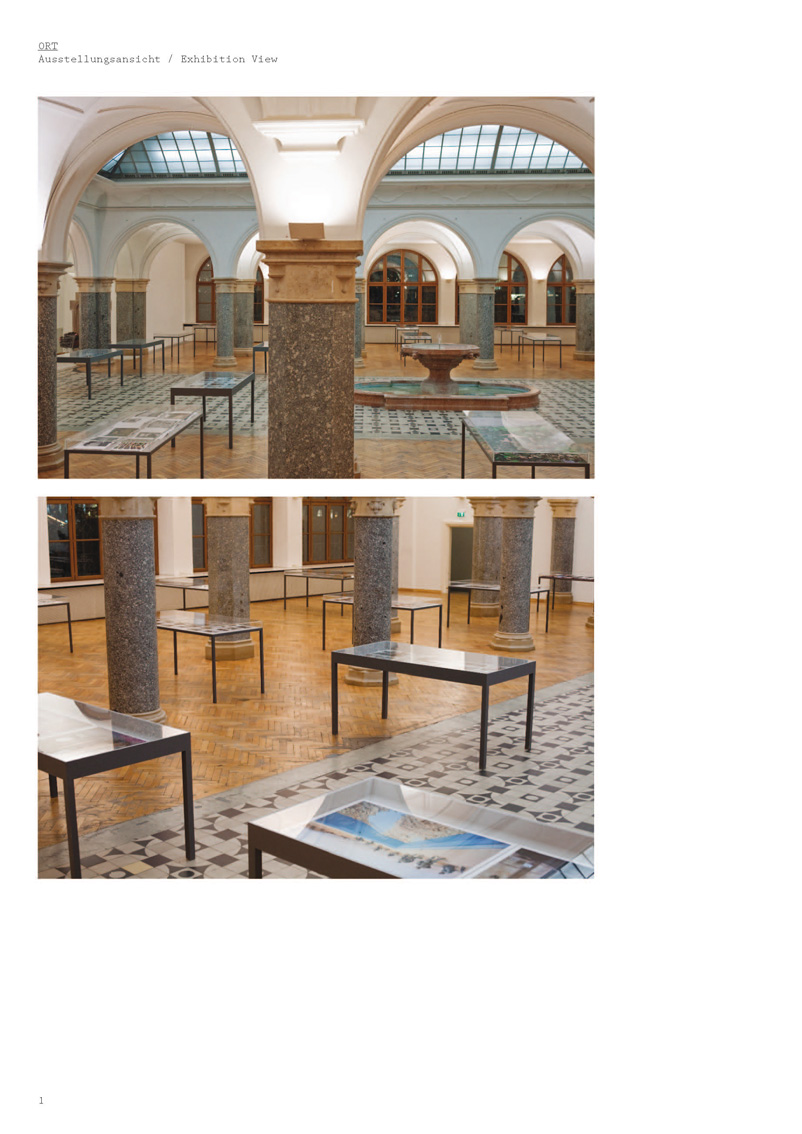
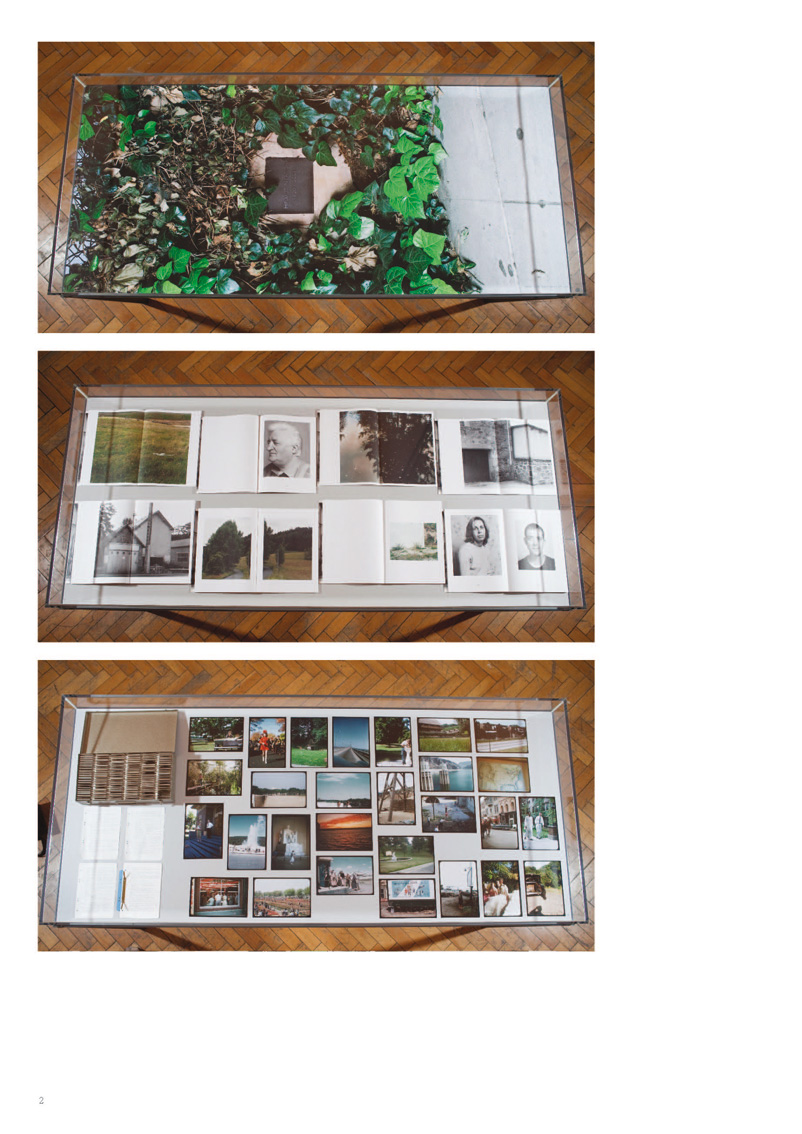
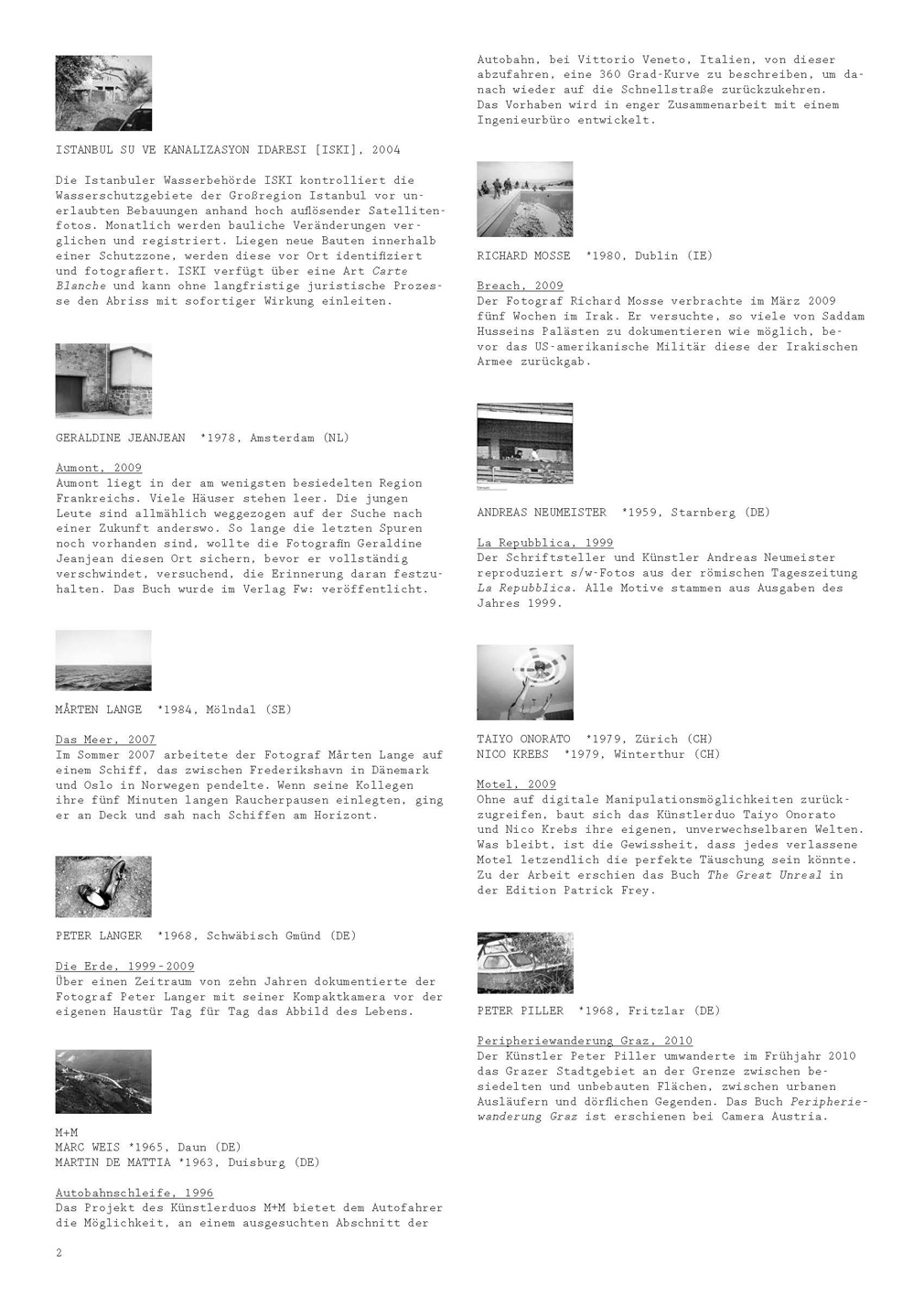
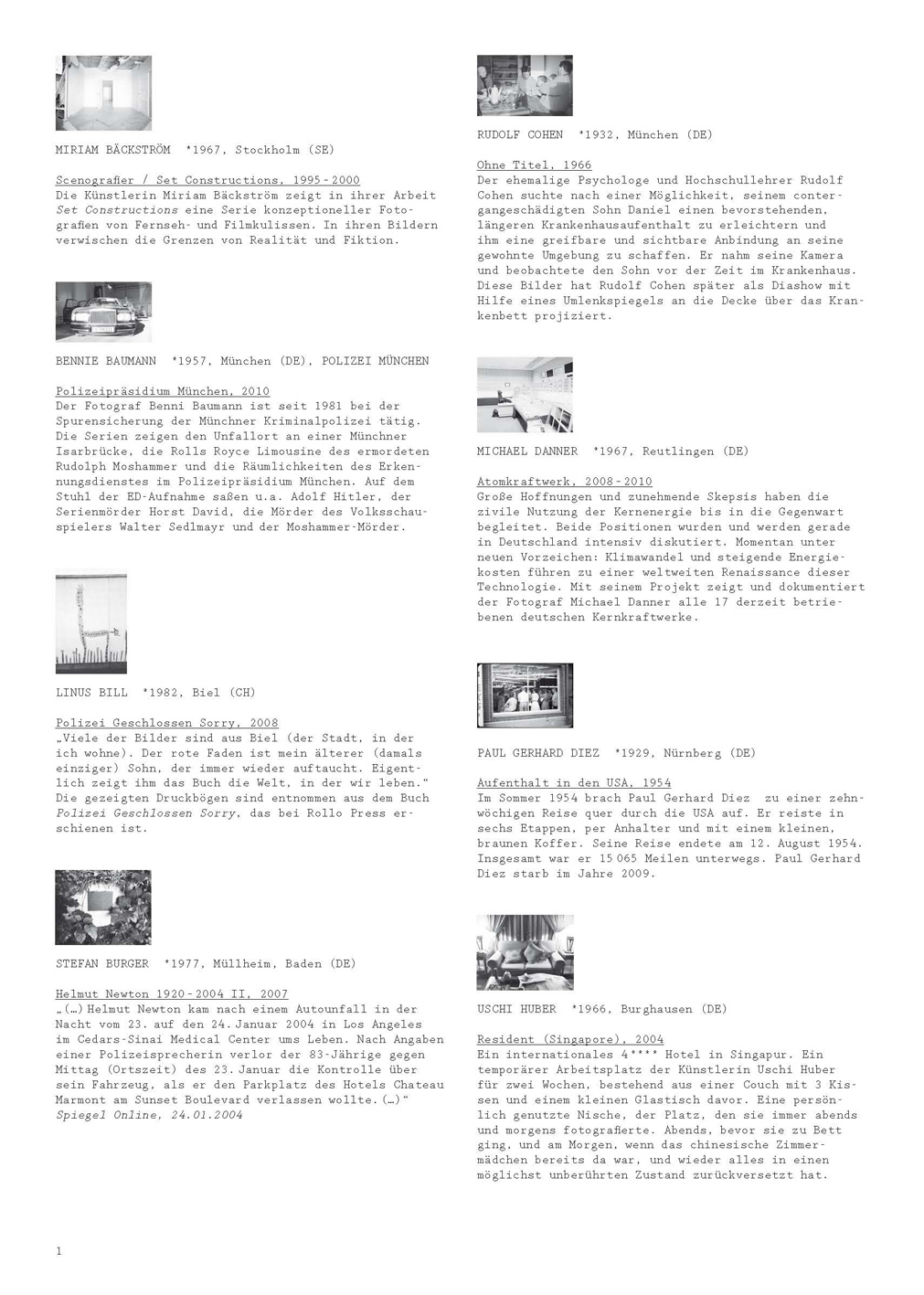
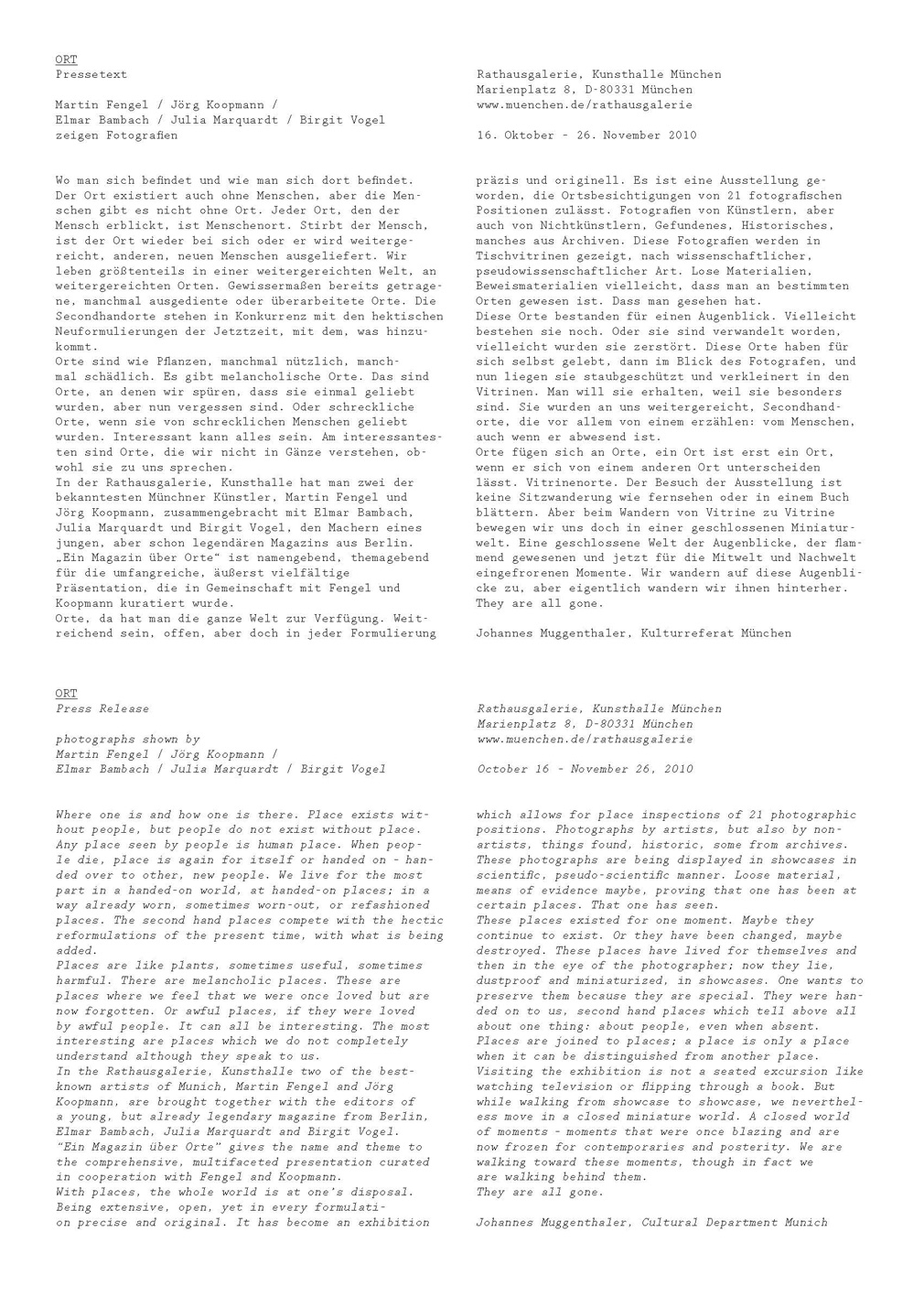
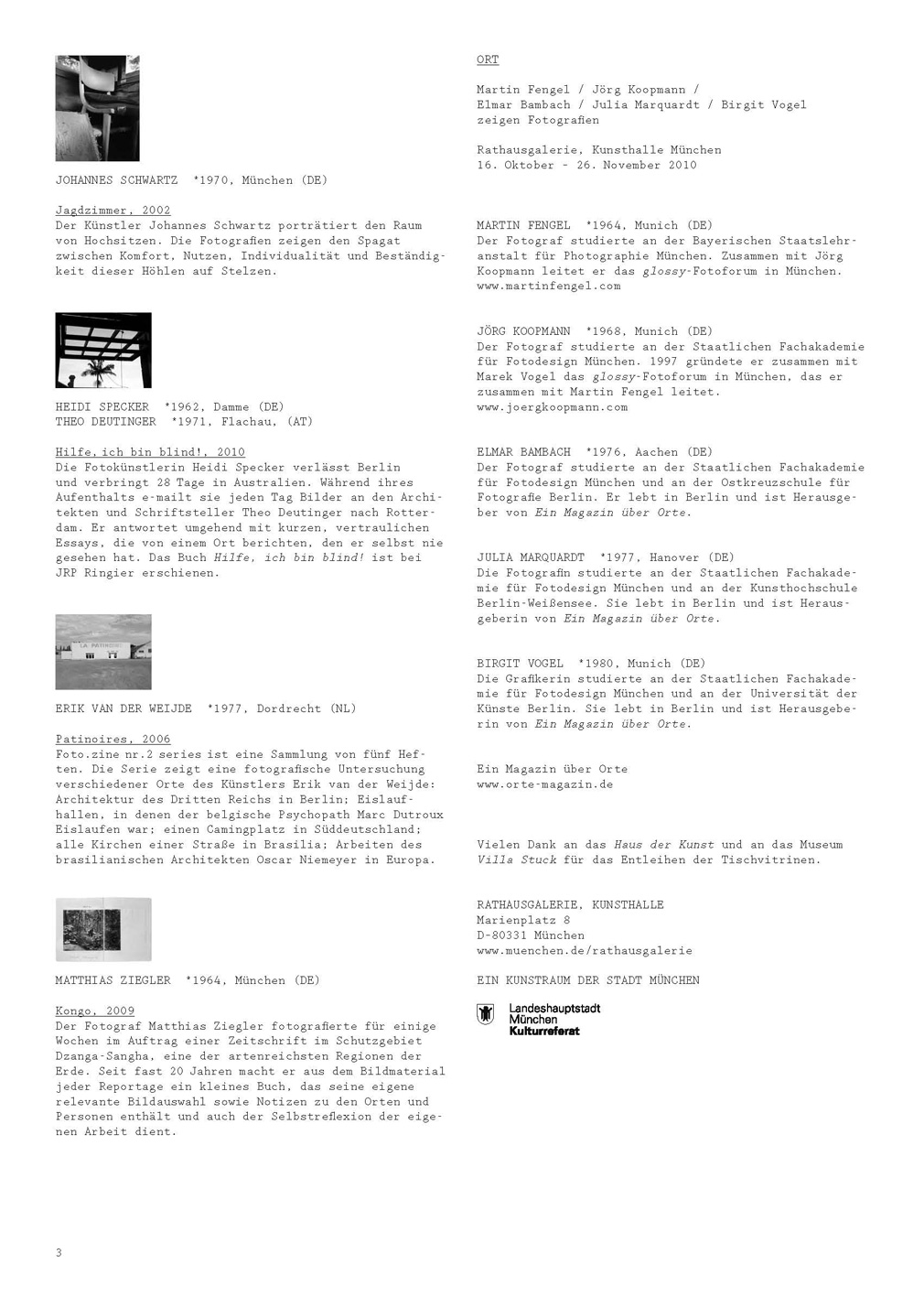 Ort | 2011 | INFO
Ort | 2011 | INFOWhere one is and how one is there. Place exists without people, but people do not exist without place. Any place seen by people is human place. When people die, place is again for itself or handed on – handed over to other, new people. We live for the most part in a handed-on world, at handed-on places; in a way already worn, sometimes worn-out, or refashioned places. The second hand places compete with the hectic reformulations of the present time, with what is being added. Places are like plants, sometimes useful, sometimes harmful. There are melancholic places. These are placeswhere we feel that we were once lovedbut are now forgotten. Or awful places, if they were loved by awful people. It can all be interesting.The most interesting are places which we do not completely understand although they speak to us. In the Rathausgalerie, Kunsthalle two of the bestknown artists of Munich, Martin Fengel and Jörg Koopmann,are brought together with the editors of a young, but already legendary magazinefrom Berlin, Elmar Bambach, Julia Marquardt and Birgit Vogel. “Ein Magazin über Orte” gives the name and theme to the comprehensive, multifaceted presentation curated in cooperation with Fengel and Koopmann. With places, the whole world is at one’s disposal.Being extensive, open, yet in every formulation preciseand original. It has become an exhibition which allows for place inspections of 21 photographic positions. Photographs by artists, but also by nonartists, things found, historic, some from archives. These photographs are being displayed in showcases in scientific, pseudo-scientific manner.Loose material, means of evidence maybe, proving that one has been at certain places. That one has seen. These places existed for one moment. Maybe they continue to exist. Or they have been changed, maybe destroyed. These places have lived for themselves and then in the eye of the photographer; now they lie, dustproof and miniaturized, in showcases. One wants to preserve them because they are special. They were handed on to us, second hand places which tell above all about one thing: about people, even when absent. Places are joined to places; a place is only a place when it can be distinguished from another place. Visiting he exhibition is not a seated excursion like watching television or flipping through a book. But while walking from showcase to showcase, we nevertheless move in a closed miniatureworld. A closed world of moments – moments that were once blazing and are now frozen for contemporaries and posterity. We are walking toward these moments, though in fact we are walking behind them. They are all gone.
Johannes Muggenthaler, Cultural Department Munich
 Ort | 2011 | INFO
Ort | 2011 | INFOWhere one is and how one is there. Place exists without people, but people do not exist without place. Any place seen by people is human place. When people die, place is again for itself or handed on – handed over to other, new people. We live for the most part in a handed-on world, at handed-on places; in a way already worn, sometimes worn-out, or refashioned places. The second hand places compete with the hectic reformulations of the present time, with what is being added. Places are like plants, sometimes useful, sometimes harmful. There are melancholic places. These are placeswhere we feel that we were once lovedbut are now forgotten. Or awful places, if they were loved by awful people. It can all be interesting.The most interesting are places which we do not completely understand although they speak to us. In the Rathausgalerie, Kunsthalle two of the bestknown artists of Munich, Martin Fengel and Jörg Koopmann,are brought together with the editors of a young, but already legendary magazinefrom Berlin, Elmar Bambach, Julia Marquardt and Birgit Vogel. “Ein Magazin über Orte” gives the name and theme to the comprehensive, multifaceted presentation curated in cooperation with Fengel and Koopmann. With places, the whole world is at one’s disposal.Being extensive, open, yet in every formulation preciseand original. It has become an exhibition which allows for place inspections of 21 photographic positions. Photographs by artists, but also by nonartists, things found, historic, some from archives. These photographs are being displayed in showcases in scientific, pseudo-scientific manner.Loose material, means of evidence maybe, proving that one has been at certain places. That one has seen. These places existed for one moment. Maybe they continue to exist. Or they have been changed, maybe destroyed. These places have lived for themselves and then in the eye of the photographer; now they lie, dustproof and miniaturized, in showcases. One wants to preserve them because they are special. They were handed on to us, second hand places which tell above all about one thing: about people, even when absent. Places are joined to places; a place is only a place when it can be distinguished from another place. Visiting he exhibition is not a seated excursion like watching television or flipping through a book. But while walking from showcase to showcase, we nevertheless move in a closed miniatureworld. A closed world of moments – moments that were once blazing and are now frozen for contemporaries and posterity. We are walking toward these moments, though in fact we are walking behind them. They are all gone.
Johannes Muggenthaler, Cultural Department Munich




